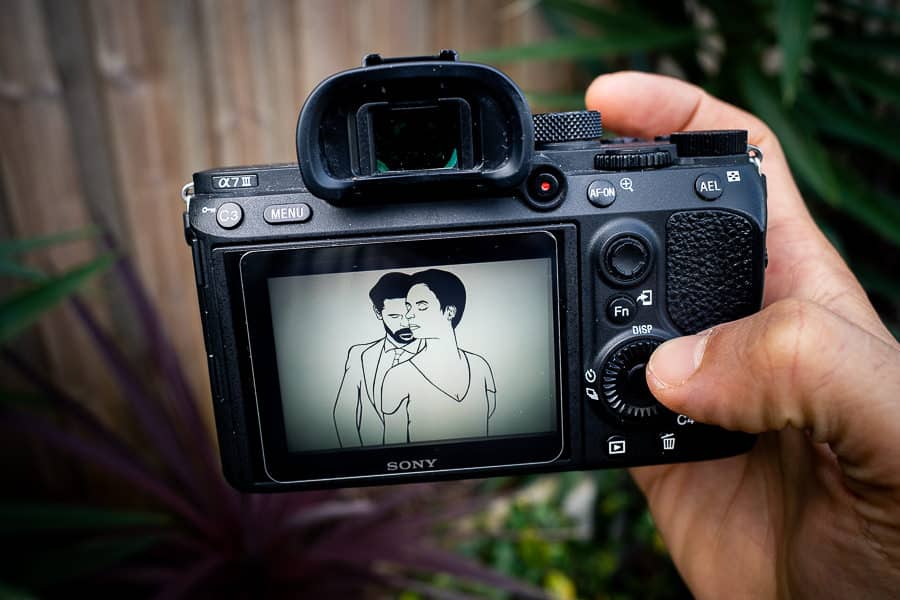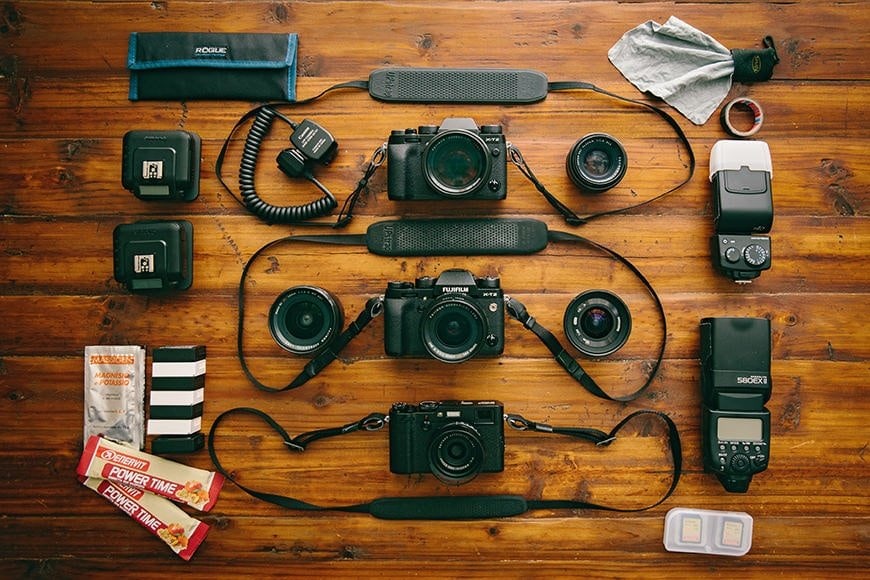
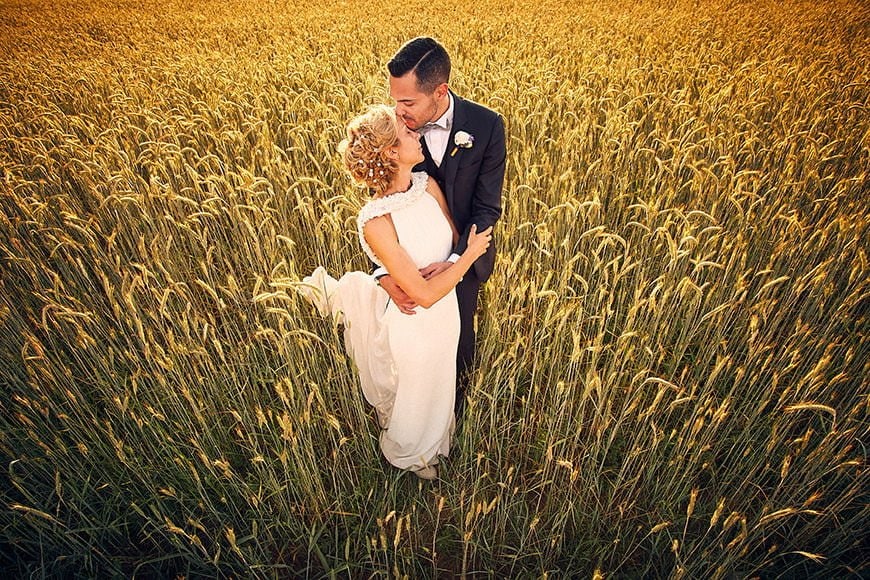
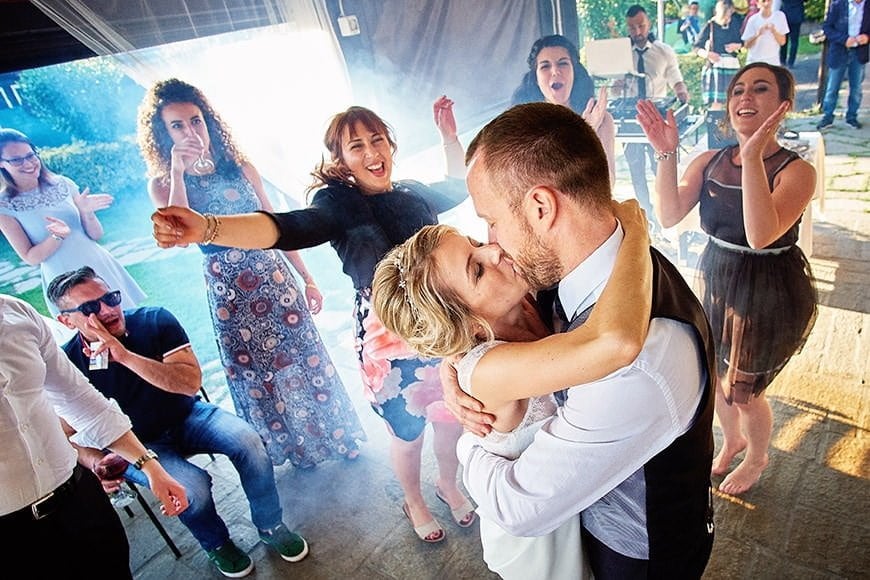
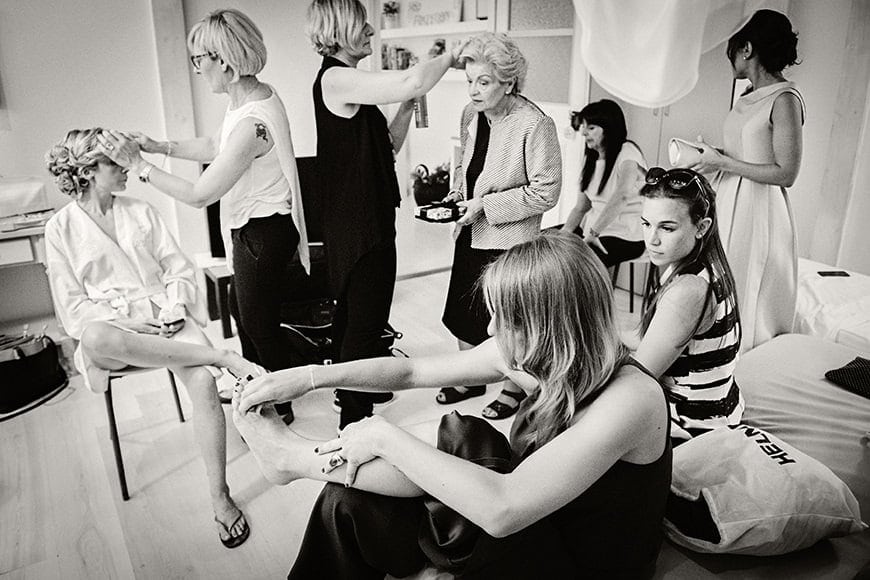
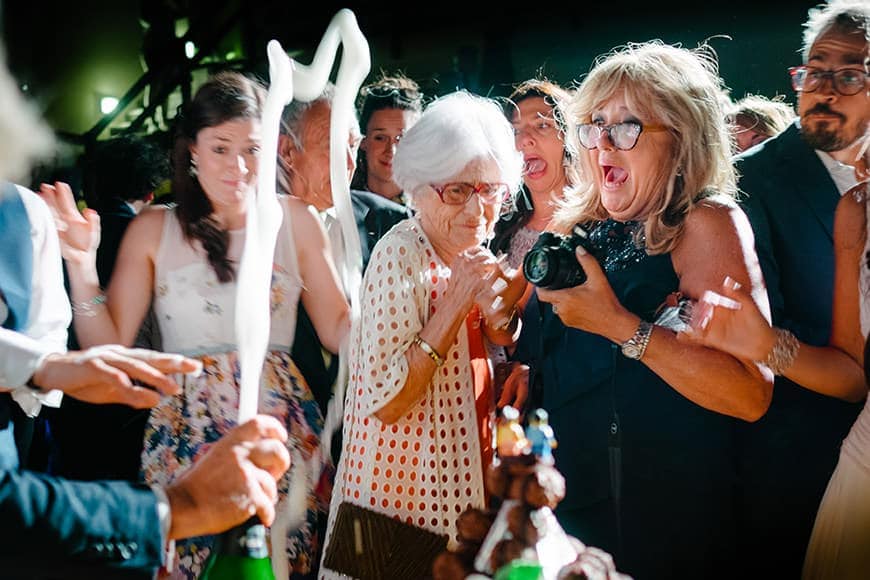

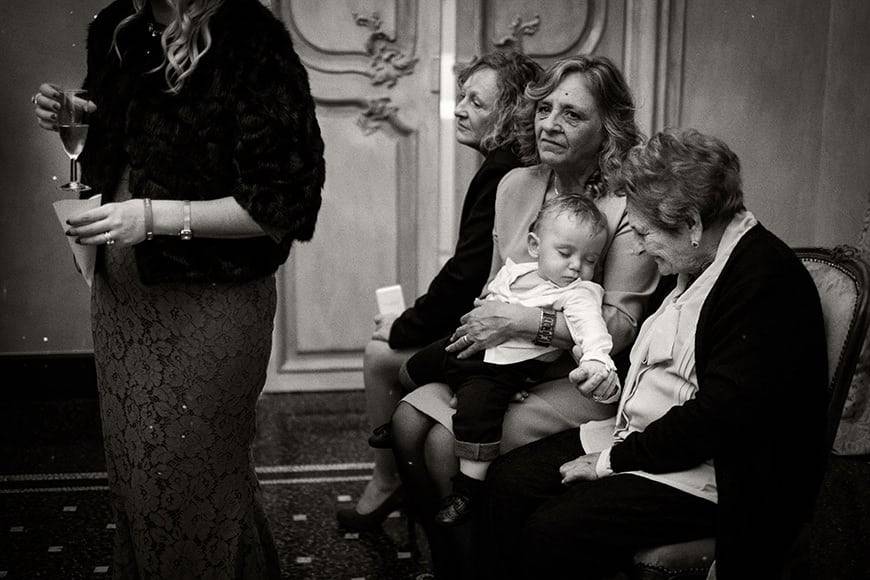
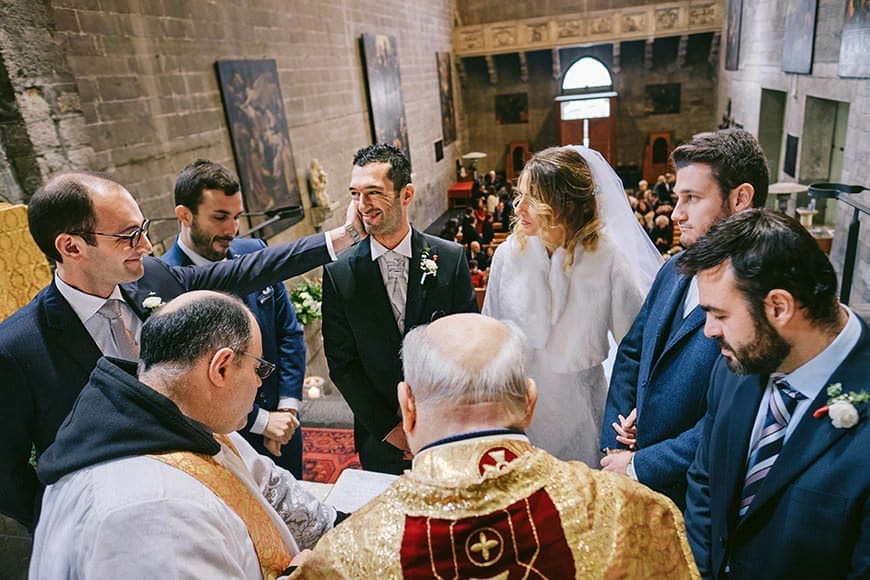

Andrea Bagnasco
Wedding | Last Updated: February 1, 2021
Hi, my name is Andrea Bagnasco and I’m a documentary wedding photographer based in Varazze, a small coastal town on the Italian Riviera. I’m married, father of a young boy and have an incurable passion for guitars.
My photography is observational and unobtrusive. My goal is to document the wedding day for my clients through images that are both aesthetically pleasing and emotionally engaging.
I am constantly looking to represent people for who they are, unique in their own normality, and to tell their stories – to use my own style to put my clients in the spotlight. My photography is inspired by the great street and documentary photographers: Cartier Bresson, W. Eugene Smith, Alex Webb and Salgado just to name a few and all the great photojournalists.
I like my pictures to be real, because the true story of the wedding day is to me by far the most important thing that I can deliver to my clients.
I am image master for DxO Labs, member and multi award winner at ANFM (National Association of Italian Wedding Photographers), ISPWP (International Society of Professional Wedding Photographers) and Fearless Photographers, some of most popular and better attended international directories of wedding photographers.
2017 Wedding Kit – General Remarks
In my constant quest for a light kit I recently switched from my Canon DSLR’s to the Fujifilm X system for weddings. The game changer for me was the X-T2. I had been using a Fuji X-T1
for a couple of years but I could never get enough confidence in it to quit my Canons. So the Fuji was confined to the cocktail hour or reception, when action slows down and things are easier to keep under control.
As mentioned, the X-T2 has so many improvements over the X-T1
that make it a oh-so-much better performer in every respect, both in the field and back in the studio when the files need to be processed. The X-T2
feels a lot faster than the previous model. It doesn’t lag and the autofocus is quicker and more accurate. It was finally given a joystick to select focus points, a front wheel to adjust exposure compensation and double memory cards! That and the 24Mp sensor make it a great replacement for my Canon 5D Mark III
’s.
Of course, the Canon 5D Mark IV today probably represents a technically superior camera, but the performance to size and weight ratio make my little X-T2
’s the winners for me. What’s the point of having a superior camera at the end of a long working day if I am lacking the desire to use it because I had to drag it around the whole day? I much prefer to work with a smaller and probably less capable camera that allows me to get to the end of the day with the energy to be creative and take better pictures.
The point being: this last generation of Fuji mirrorless cameras are definitely good enough tools for my job, and much easier to carry around the whole day than my Canon kit.
So my wedding setup has evolved from two Canon DSLR’s + one Fuji to three Fuji’s. Right now, I bring two X-T2’s that I carry on me most of the day and a Fuji X-100F
, mostly for backup. All cameras are equipped with Upstrap straps as I tend to wear my cameras over my shoulders, and those are by far the safest and most comfortable straps to wear that I have come across.
The whole kit fits into a Tenba Messenger DNA 15 bag, or Think Tank Street Walker backpack
, or into a small Evecase messenger bag
when I can afford to leave some pieces of equipment at home for smaller gigs.
2017 Wedding Kit – Details
Here are some details concerning each piece of equipment and why it found its place in my kit (from left to right)
Mineral Salts + Energy Bars – these are to recharge my own batteries, especially until we reach the reception and food and beverages!
Camera Batteries – I don’t understand people making a big deal about having to replace batteries during the day. Mirrorless need to go through three batteries roughly during a typical wedding. Just have spare charged batteries at hand and replace when needed, end of story. I use both Fuji original batteries and those EX-Pro Ultra Whites that seem to last just as long as the originals. Very happy about those so far.
Cactus V6 Transceivers – these allow me to use any flash (in manual mode) on my Fuji’s and to control power from remote. Sometimes I need radio remotes for specific stuff during the day (e.g. on the dance floor, with DJ lights). The V6s seem to work well so far – they don’t do High Speed Sync but I rarely need HSS, plus with the X-100F
and its leaf shutter I can sync flash up to 1/1000th without HSS.
Rogue Flash Gels – I hardly ever need them, but when I do there’s no substitute for them. So they come with me.
Canon OC-E3 – the Canon flash cord works great with the Fuji’s (same pin layout)
Fuji XF 16mm f/1.4 R WR – 24 mm field of view full frame equivalent. I say field of view equivalent as optically this is and remains a 16mm lens. In my opinion, this is one of the very best Fuji XF lenses today, if not the best. It focuses so close that you can almost hit the subject with the front element. I love the contrast and definition that I get from this lens. It focuses quickly and precisely. Plus, it also seems to be weather resistant.
Fuji X-T2 – I have two of those, they are great cameras. It takes a bit getting used to the Fuji’s when coming from Canon or Nikon, but once you get there, it makes a lot of sense. I love the fact that the main commands are all accessible via physical dials, like it used to be on film cameras of years ago. They are very well made and seem to be solid performers so far. The electronic view finder also takes a bit getting used to, but again once you’ve spent some time with it, it makes for a completely new (and fun!) shooting experience.
The new 24Mp X-Trans APS-C sensor provides a lot of resolution to do all kinds of cropping in post-production and the latitude is really really good. I’d say better than what I was used to with my Canon 5D Mark III’s. Weight and size speak (I should say sing) for themselves.
Fuji XF 56mm f/1.2 R – 85 mm field of view full frame equivalent. This is a great mid telephoto and portrait lens. The longest lens in my Fuji kit right now, so I might try the 90mm in the future as sometimes I’m missing the reach of my old 135mm Canon (well, not only the reach). Anyhow, this is a really good lens and a must-have one in my bag.
Fuji XF 23mm f/1.4 R – 35mm field of view full frame equivalent. Very, very useful lens. This and the 35mm (50mm equivalent) is what I have on my cameras during cocktail and reception 90% of the time.
Fuji X-100F – such a fun camera. It would have been perfect if they gave it the second memory card slot. Other than that it’s just about the ideal backup to the X-T2
’s. Same sensor. You can set it up to work the same as the bigger cameras, with the same commands layout. It’s got the focus point selection joystick and front wheel to control exposure compensation. It works on exactly the same batteries as the X-T2
’s (yay!). Plus, it’s got the Optical viewfinder for yet another shooting experience altogether. Weighs next to nothing. Leaf shutter!!!
Fuji XF 35mm f/1.4 R – 50mm field of view full frame equivalent. This is a great little lens that I really enjoy shooting. I don’t care if people say the new 35mm f/2 is a better lens and quicker to focus. This one is quick enough (I was used to the Canon 50mm f/1.2
which never came even close to being quick to focus) and for the way I work I’ll take the extra stop of light any day over a marginally better optical performance.
Samyang 12mm f/2.0 NCS CS – 18mm field of view full frame equivalent. This lens is an amazing value for the price. Ultra-wide is where I need to be for specific shots during the day, so I’d need one of these regardless. Manual focus only but 12mm allows to work without focusing as long as there’s enough light. For all other cases, there’s the focus peaking function of the X-T2
’s.
Microfiber cloth, gaffer tape – got to be there for when you need them
Nissin i40 flash – compact and lightweight flash that I use either on the hot shoe or with the flash cord. Fujifilm’s TTL works fantastic and this little Nissin gets the job done.
Canon 580 EXII – I use this in conjunction with the Cactus V6
’s when *way* off-camera flash is needed. When close off-camera flash is ok, I stick to the cord + Nissin.













